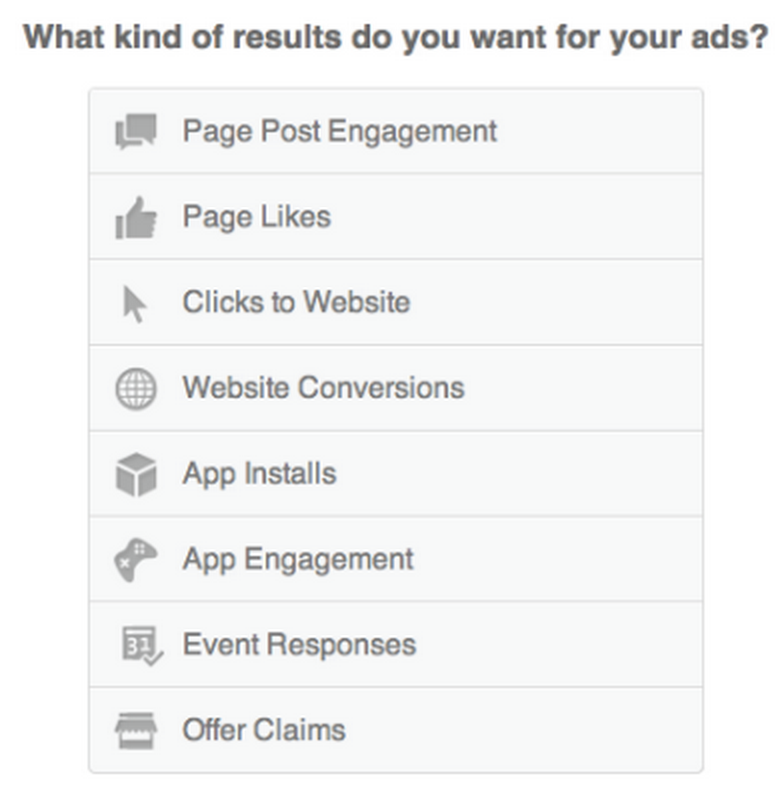Facebook is rich, but it could be richer.
One important stakeholder that most social networks seem to forget about, is the marketing consultant/ad agency, which is ironic considering we are the ones forking over the cash.
Many people gripe about Facebook advertising and its impressions-to-actions ratio or post reach algorithm (ugh, it’s awful lately, isn’t it?), but I recommend advertising to my clients frequently, because it seems to accomplish our objectives.
(Today, a business has to advertise on Facebook just to reach its audience. Otherwise, Facebook isn’t going to show your content to anybody, not even people who signed up as your fans. This is primarily because, as each day goes by, more and more business pages find out advertising on Facebook and the real estate for ad space gets more competitive. Back in the day if you advertised on Facebook you were savvy, but now every guy and his mother is advertising and suddenly you’re competing for engagement.)
Yes, Facebook advertising has its flaws, but one big one in particular is costing the social giant a ton of loot.
Yes, Facebook advertising has its flaws, and one big one is costing the social giant a ton of loot.
Ready for it? Here it is: you can only run one client’s ad at a time.
So if I’m the admin of Hey There Great Hair Salon’s page and Lucy Ford’s Record Store’s page and they both want me to manage an ad on their behalf at the same time, I can’t.
Wait, huh? What do you mean?
Way back in the day, Facebook realized it made more sense to have different kinds of pages for different kinds of entities, so they created the “brand page” as an alternative to a personal profile (and eventually forced brands to convert). That allowed users to follow brands of interest (through a new concept called “liking”) without having to “friend” them first and wait to be accepted. It also opened up new opportunities for brands, such as access to analytics and custom tabs.
At that point Facebook made the decision to connect brand pages to users’ personal profiles. Different from on Twitter, where a business account is completely separate from a personal account, Facebook admins log-in using their personal account credentials and need to toggle to their brand page from their personal profile. (I still have a hard time explaining to clients why I need the email address linked to their personal profile to add them as an admin on their new business page.)
While I don’t mind this aspect of the setup because it makes it easy for me to hop from one of my client’s pages to another without having to log-out and log back in, the advertising experience can be nightmarish.
For one, other page admins can’t see or pull ad analytics, only the individual running the ad can. How is that supportive of advertisers who are dishing out money for that data?
But the big missing piece of the puzzle is clear to those of us who are admins of multiple pages. We can keep multiple credit cards on file, but only one can be designated as “primary,” and then when it’s time to create a new ad, it automatically runs against your “primary funding source.” Since you can only have one of those at a time, creating a separate ad for a separate client at the same time would be forced onto the same credit card.
But the big missing piece of the puzzle is clear to those of us who are admins of multiple pages.
Why is Facebook doing this?
So what’s Facebook’s reasoning behind not allowing us to run more than one brand’s ad simultaneously? My guess is Facebook doesn’t really know what it’s missing out on.
I have come across issues like this before, all because the platforms seem to neglect testing as well as support for their key stakeholders, the brand advertisers (I’m looking at you too, LinkedIn). We’re forced to join the same support forums as regular users who encounter regular issues that many others have also experienced, and then receive canned answers that in no way help solve the issue at hand. As a social media strategist, I have encountered weird glitches, exceptions to the rule, and curious scenarios that the typical user would never encounter. There should be legitimate support for the paying, tech-savvy users.
As a social media strategist, I have encountered weird glitches, exceptions to the rule, and curious scenarios that the typical user would never encounter.
The Short-Term Workaround
I have found myself in many scenarios where I would ideally be running different brand ads at the same time but can’t. The workaround is either to plan out advertising ahead of time so as not to need to run more than one brand’s ad at a time, but that doesn’t work so great for those instances when one wants to spontaneously advertise, such as when “boosting” posts. That’s where Facebook is really getting hurt. All those missed opportunities add up quickly when you have millions of advertisers.
All those missed opportunities add up quickly when you have millions of advertisers.
The other workaround is to go through another page admin, which isn’t ideal, particularly if that person is only an admin because they, say, own the business and have no idea how to begin advertising on Facebook let alone manage and act upon the data to which they have access.
The Solution
The simple solution is for Facebook to add a drop-down box at the end of the ad campaign’s set-up page that allows the advertiser to select which advertising account (and ultimately, credit card) they want the ad to be run against.
So, Facebook, since this update would help your stakeholders and most definitely help you, can we add this solution somewhere near the top of the tasks list?
Only time will tell.

